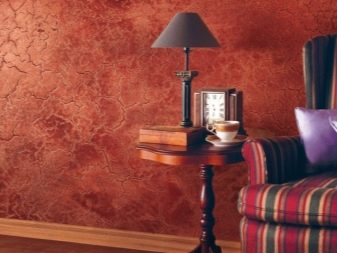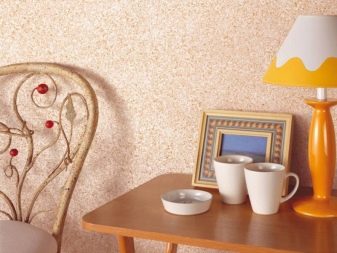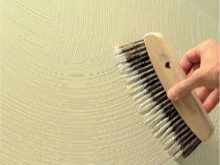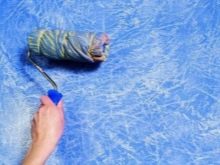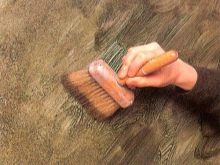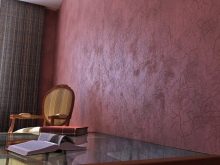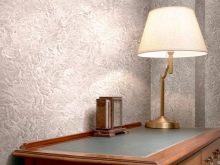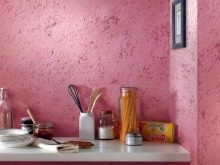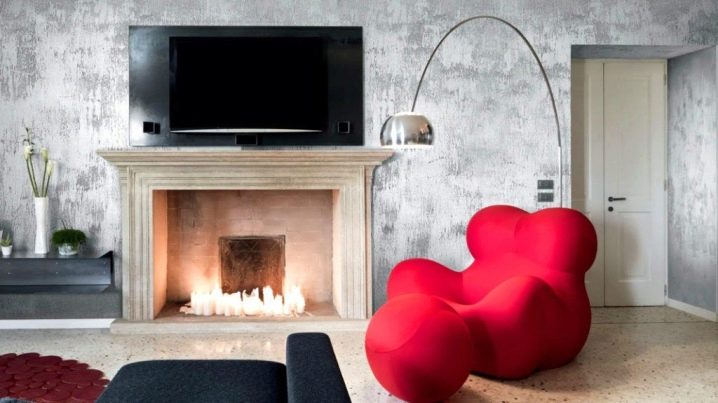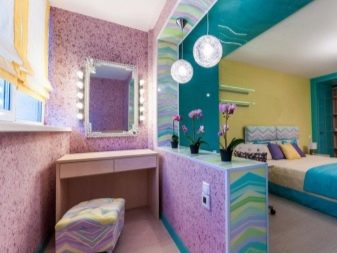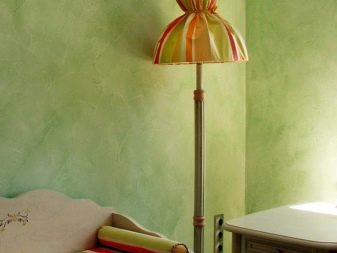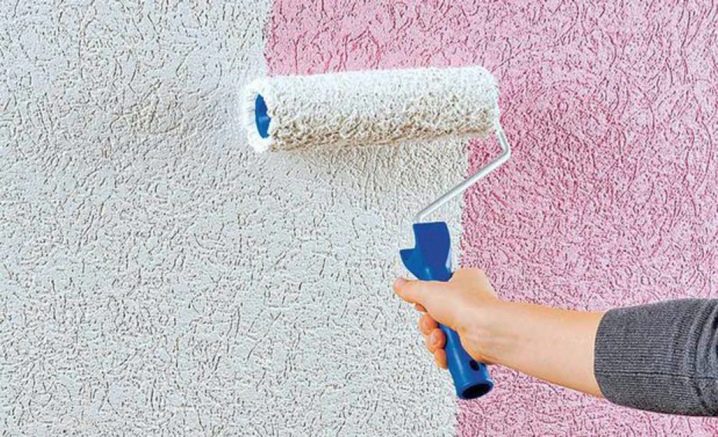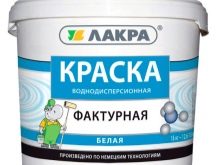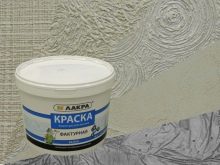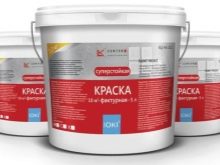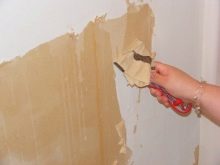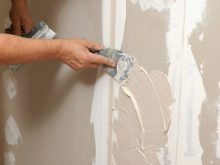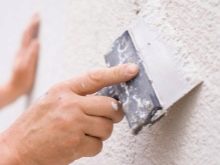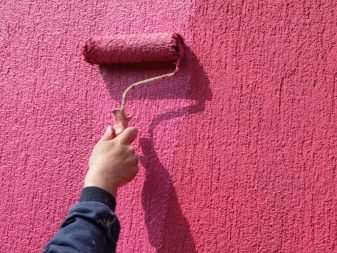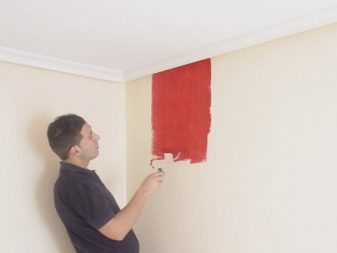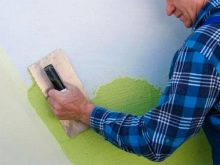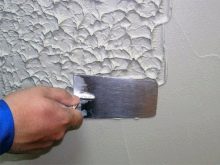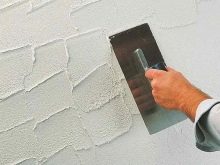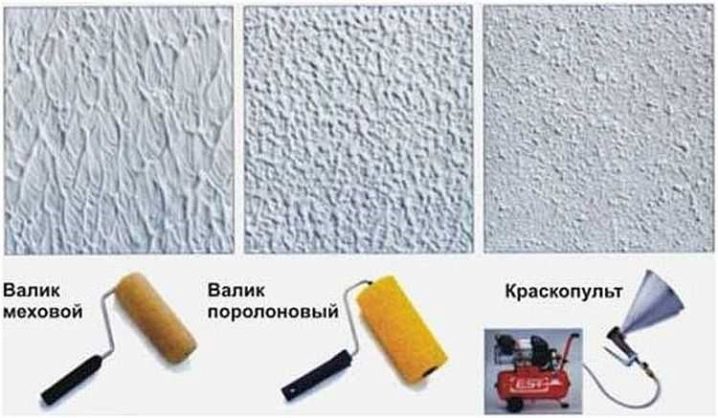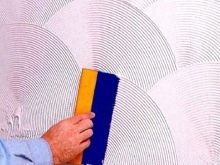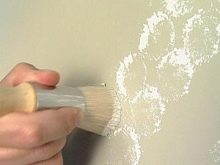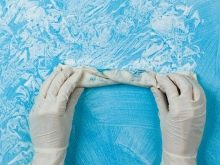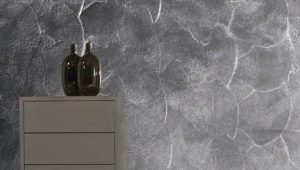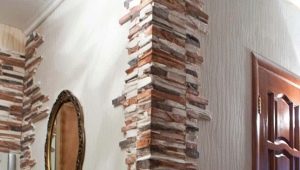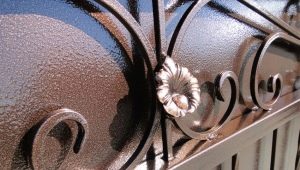Subtleties of the process of applying textured paint
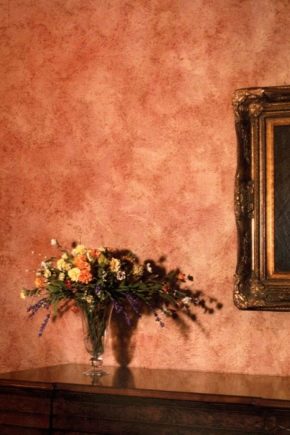
With the help of textured paint your room will sparkle with new colors. In this article, you will learn how to do the staining process with this substance yourself. This instruction is suitable even for beginners.
Special features
Today, when you finish the walls on their surface, you can display any idea. In addition to the usual putty, at this stage the master is given a wide choice of textured paints - a special material intended for painting. Its structure includes a structural component.
Textured paint is used for external and internal works. Its use is allowed on a wide range of surfaces - on wood, glass, metal and brick materials. It is suitable for surfaces containing a layer of finishing putty.The presence of small cracks on the surface of the paint is able to mask, giving it a uniformity and smoothness. Silk coating paint is particularly suitable for wood.
Advantages and disadvantages
Textured paint, like any other type of finish, has its advantages and disadvantages. One of the qualities for which the material is so highly appreciated by the master is its decorative effect. A variety of colors and textures allows you to carry out the most sophisticated design solutions. The second advantage is the long life of the coating. Wallpapers - an alternative option for decorating walls, on average, can last about 5 years, and textured paint has a 10-year lifespan. The application of the material occurs relatively quickly, while saving the time of the master.
You can freshen up the color of the walls by applying a new layer of paint, while wallpaper that has lost its brightness will have to be re-glued, which will take more time compared to repainting.
It is worth noting that the harmful effects of sunlight on textured paint does not apply, so that the material does not fade. This type of coating has plasticity and is not covered with small cracks during the natural shrinkage of buildings.This finishing option has a solidity, which implies a continuous continuous coating without any adhesions and overlays, which can not be avoided as a result of the use of other materials. Their presence is subconsciously perceived as a defect that visually violates the integrity of the wall. The textured coating is characterized by unpretentiousness, it is possible to remove dirt from its surface without difficulty with the help of a foam sponge. The material has an antistatic property, which eliminates the reduced settling of dust on it.
The use of this material is also permissible when arranging the interior of a nursery. For finishing a child's room, the choice falls on water-based paints that do not contain irritating components and do not cause allergies. Textured paints are suitable for covering rooms for any purpose, including a bathroom, as they are highly moisture resistant and are not destroyed by water vapor. The lack of susceptibility to dampness plus everything prevents the formation of mold. Textured coating is used in the decoration of the kitchen, because it practically does not absorb odors.
The material has a frost resistance and resistance to high temperatures, which greatly expands the possibilities of its application.
The disadvantage of using textured paint is mandatory preliminary preparation of the walls. The surface should be as smooth as possible, but the presence of small irregularities is not critical, the paint is able to block them. The disadvantage of textured paint - high consumption. Per unit of area can take a large amount of material, which indicates the high cost of this method of finishing.
Kinds
Textured paints are different in their composition:
- Mineral Available as a dry powder based on lime and cement. Used in the finishing of exterior walls.
- Silicone-based paint will serve as a durable coating both outside and indoors. At the end of the work, the finished coating is resistant to temperature extremes and moisture.
- Silicate textured paint - this is the most expensive type of material, but compared to the previous one, it has more positive qualities. It has antistatic properties that prevent dust from settling on the surface and is easy to clean.admits the possibility of wet processing. Used in combination with a silicate based primer.
- Acrylic textured paint is the most plastic type of material, allows for the possibility of various tinting and the use of suitable fillers.
The composition of textured paints often include additional components that give the surface the desired design. Sawdust and quartz chips are added to the paint in order to create the relief of the walls.
For the formation of textured velvet surface a mixture of base material with quartz sand or tiny particles of metals is used, which is then specially unevenly stained. This textured material was called the name of the attack, it is able to reflect light due to those small particles in the composition. Mizuri is a type of coating obtained with acrylic with the addition of artificial starch.
Wall preparation
First of all, it is necessary to close the ceiling and the floor from unwanted contamination. For this purpose, a special film is used, which is fixed with masking tape.
Walls must be prepared before applying textured paint. They remove the old coating, rust, grease stains and the formation of mold. Then the walls need to be made smooth by plastering them and filling the surface. After the layer of putty dries, the walls are treated with an acrylic primer of deep penetration. It provides a tight interaction between the surface and textured paint, eliminating the possibility of unnecessary consumption. The color of the primer should match or be close in tone to the most textured paint. After priming it is necessary to wait 5 hours until it is completely dry, then you can proceed to the paint itself.
During the external finishing works with textured paint, attention should be paid to the weather. In no case should it be rainy or very hot. Also avoid direct sunlight on the wet surface of the paint. Avoid condensation on the working surface. The optimum will be the ambient temperature ranging from +5 to +30 C.
If the coloring of textured materials occurs indoors, it should be carefully ventilated.
Drawing
One of the important factors that ensure the success of the finishing of walls with textured paint is the correctly chosen lighting.Experienced craftsmen advise when using the type of lighting that is planned to be installed in the room after the completion of the repair. The perception of light and shade of the future relief, which forms the visual perception, depends on the direction of the incident light. Before starting work, the paint should be heated to room temperature. Before applying it must be thoroughly mixed and, if necessary, add color to it to create a certain color. After adding it, mixing is repeated. A drill with a special nozzle-mixer will help to get the most even mixture. It is acceptable to add a small amount of water to the mixture to change the consistency, but its amount should not exceed 1%.
Options for the application of textured coatings vary depending on what result you plan to get. Basically, an extensive spatula is used for applying paint, and the surface development in the corners, on the contrary, is narrow. It is recommended to put a thick layer of paint on which it will be easy to apply embossed patterns.
The minimum thickness of the layer of textured paint should not be less than 3 mm. Movement on the working surface should be from the angle of the plane to the opposite. Covering the wall with textured paint, it is necessary to work quickly and without long interruptions, since pauses can lead to uneven drying of various fragments. It is impossible to create an even layer at a time when it has already begun to dry on a separate part of the surface. There is a high probability of irregularities, which will reduce all work to nothing.
Creating patterns requires plasticity still raw paint, which it retains for one and a half hours after application.
Upon completion of applying the container with textured paint should be tightly closed. Air will cause drying and deterioration of the material. Textured paint allows the use of a roller. Its pile can be both smooth and hard, up to 1 cm long. The direction of the roller should be the same throughout the entire period of painting, this will make the surface uniform.
There is a third method of applying a textured paint, which requires a pneumatic spray. Its essence lies in the fact that the paint jet is distributed over the entire surface.Applying paint with a spray gun will give a quality result if its nozzle is at least 3 mm in diameter and the pressure is 5 atm. If necessary, painting takes place in two layers, and the drying time of the first layer takes from 3 to 10 hours. Full drying of several layers of paint takes one day in duration. After finishing work, the tools must be thoroughly rinsed. The final polymerization is completed after 2 weeks.
Creating effects
Drawing a pattern is difficult for beginners, so an inexperienced person in this business needs patience. You can check your strength on a small fragment of the surface, which in the future will not be very noticeable or will be blocked by furniture after the repair is completed. You can add an unusual texture, step by step, following a certain algorithm of work. Paint roller need to roll leveled surface. Then, another paint is applied to the resulting dried texture, its remains are removed with a sponge, and in the depressions of the relief it remains saturated. As a finishing touch enamel is applied with the help of a roller with a soft nap.Additional texture can be created by wrapping the roller with a thick rope or leaving traces of blows on the paint with a damp cloth.
To obtain the original texture used trowel, which is used for applying a second layer of paint on the surface of the wall.
Many choices of decor provides Marseille wax. This plastic material is applied over the paint, it can be given any relief.
If a sharp object to scratch the patterns in the not yet frozen layer of the coloring matter, it is possible to cut a stencil on this non-uniform surface. Using a rubber roller is able to set the rhythm of the embossed pattern, the surface of the instrument will contain in the repeating order of bumps and depressions. Her print will be placed over the entire surface of the walls after they are rolled with a roller. For drawing a pattern a notched trowel can be used, then the surface will be decorated with figures from lines.
The resulting pattern depends on the angle at which the movement was carried out with a spatula, it can be made in the form of semicircles or waves. A newspaper wrapped in polyethylene will allow you to create irregularities on your apartment wall, resembling flower buds in shape,each of which will have its own unique pattern. They can be given any color - red, pink, maroon.
Master class on applying textured paint, see the next video.
